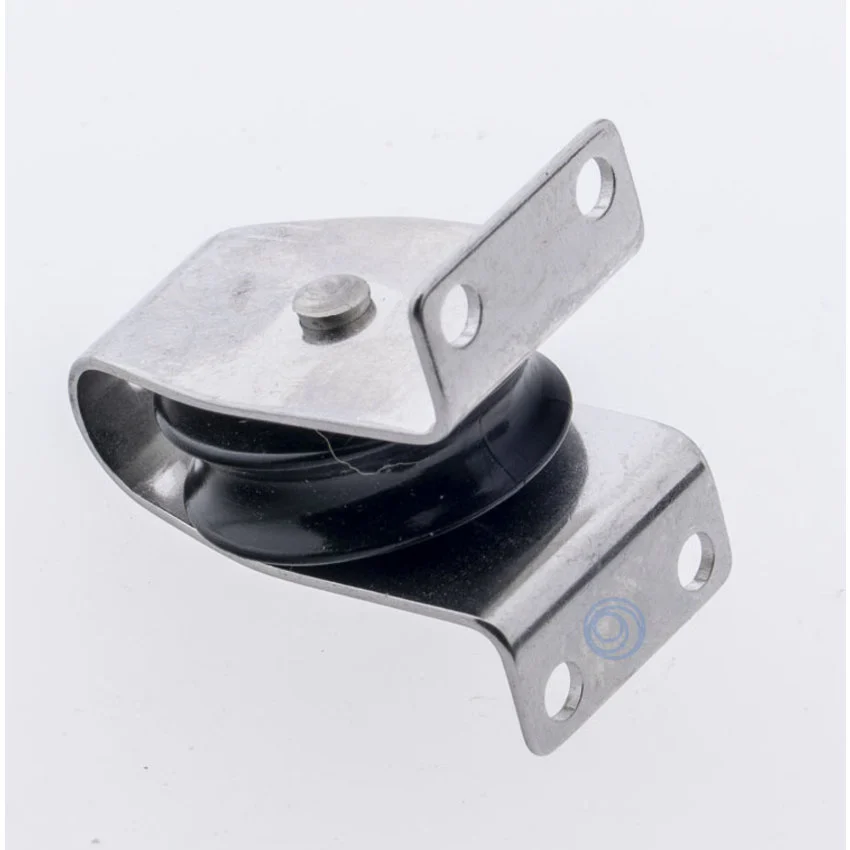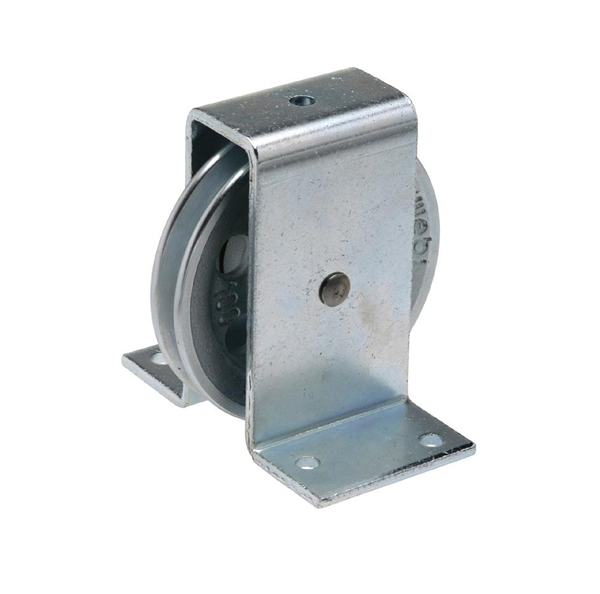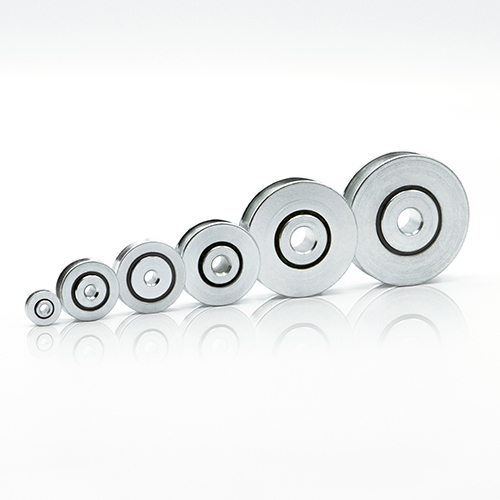Product Description
SBD Closed Type Wire Rope Pulley Block Single Sheave with Hook
- Closed Type Pulley Block
- 3211 Pulley Block
- Cable Pulley
- Lifting Block
- Product description: 3211 Closed Type Wire Rope Pulley Block Single Sheave with Hook is 1 kind of low-end block for Wire Rope, it has simple structure, but the size and working load limit is same as Open Type Pulley Bl
| PULLEY SNATCH BLOCK SINGLE SHEAVE WITH HOOK | ||||
| SIZE | CODE | S.W.L | DIAM OF ROPE | N.W |
| (IN) | (TON) | (MM) | (KG) | |
| 2 | SBD02 | 0.25 | 6 | 0.55 |
| 3 | SBD03 | 0.5 | 8 | 1.15 |
| 4 | SBD04 | 1 | 10 | 2 |
| 5 | SBD05 | 1.5 | 13 | 3.2 |
| 6 | SBD06 | 2 | 16 | 4.8 |
| 7 | SBD07 | 3 | 19 | 7.8 |
| 8 | SBD08 | 4 | 22 | 10 |
| 10 | SBD10 | 5 | 25 | 14 |
| 12 | SBD12 | 6 | 28 | 18 |
/* January 22, 2571 19:08:37 */!function(){function s(e,r){var a,o={};try{e&&e.split(“,”).forEach(function(e,t){e&&(a=e.match(/(.*?):(.*)$/))&&1
| After-sales Service: | 1 Year |
|---|---|
| Warranty: | 1 Year |
| Type: | Hook |
| Material: | Alloy |
| Number of sheaves: | 1 |
| Control: | Manual |
| Samples: |
US$ 10/Piece
1 Piece(Min.Order) | |
|---|
| Customization: |
Available
| Customized Request |
|---|
How do advancements in materials and design impact the development of modern wire pulleys?
Advancements in materials and design have a significant impact on the development of modern wire pulleys. These advancements drive innovation, improve performance, and expand the range of applications for wire pulleys. Here’s a detailed explanation of how advancements in materials and design influence the development of modern wire pulleys:
1. Material Selection:
New materials with enhanced properties are continuously being developed, offering improved strength, durability, and resistance to wear. Advancements in materials science have led to the availability of lightweight yet high-strength materials, such as carbon fiber composites or advanced polymers. These materials allow for the design of wire pulleys that are stronger, lighter, and more efficient.
2. Friction Reduction:
Advancements in materials and surface treatments have led to the development of low-friction pulley coatings and materials. These innovations minimize friction between the cables and pulley surfaces, resulting in smoother operation, reduced energy loss, and increased efficiency. Low-friction materials, such as self-lubricating polymers or ceramic coatings, are now commonly used in modern wire pulleys.
3. Design Optimization:
Advancements in design tools and techniques, such as computer-aided design (CAD) and finite element analysis (FEA), have revolutionized the design process for wire pulleys. Designers can now simulate and optimize the performance of pulleys under different loads and operating conditions. This allows for the creation of pulleys with optimized shapes, sizes, and configurations, resulting in improved functionality and efficiency.
4. Load Capacity and Safety:
Advancements in materials and design have enabled the development of wire pulleys with higher load capacities and improved safety features. Pulleys can now be engineered to withstand heavier loads, ensuring reliable operation in demanding applications. Additionally, safety features such as built-in braking systems or load-limiting mechanisms can be incorporated into pulley designs to prevent overloading and enhance operator safety.
5. Specialized Applications:
New materials and design advancements have expanded the range of specialized applications for wire pulleys. For example, in high-temperature environments, pulleys made from heat-resistant materials can be used. In corrosive or abrasive environments, pulleys with specialized coatings or materials that offer superior resistance to corrosion or wear can be employed. These advancements allow for the customization of pulleys to meet specific application requirements.
6. Noise and Vibration Reduction:
Advancements in design and materials have also addressed the issue of noise and vibration generated by wire pulleys. Innovations such as noise-dampening features, vibration-absorbing materials, or improved bearing technologies help minimize noise and vibration levels, enhancing user comfort and reducing the environmental impact.
7. Environmental Considerations:
Advancements in materials have led to the availability of environmentally friendly options for wire pulleys. Sustainable materials, such as recycled plastics or bio-based composites, can be used to reduce the environmental footprint of pulley manufacturing. Additionally, design improvements can optimize the energy efficiency of pulleys, contributing to a more sustainable and eco-friendly operation.
Overall, advancements in materials and design have transformed the development of modern wire pulleys. These advancements have resulted in pulleys that are stronger, lighter, more efficient, and better suited to meet the evolving needs of various industries and applications.
What are some real-world examples of wire pulleys in construction and manufacturing?
Wire pulleys are widely used in construction and manufacturing industries to facilitate various tasks related to lifting, moving, and material handling. Here are some real-world examples of how wire pulleys are utilized in these industries:
Construction:
1. Crane Systems: Wire pulleys are an integral part of crane systems used in construction. They enable the lifting and movement of heavy materials and equipment on construction sites. Wire pulleys are commonly employed in tower cranes, mobile cranes, and crawler cranes to provide mechanical advantage and precise control over the loads.
2. Scaffolding Systems: In construction projects, wire pulleys are often incorporated into scaffolding systems. They assist in lifting construction materials, tools, and equipment to different levels, making it easier for workers to access the required items during building construction or maintenance.
3. Conveyor Systems: Wire pulleys are utilized in conveyor systems within construction sites. They help transport materials, such as aggregates, concrete blocks, or bricks, along the conveyor belts, optimizing the material handling process and increasing construction efficiency.
Manufacturing:
1. Assembly Lines: Wire pulleys play a crucial role in manufacturing assembly lines. They are used to lift and move components during the assembly process, ensuring smooth and efficient production. Wire pulleys integrated into automated systems provide precise control over the movement of parts, leading to increased productivity and accuracy.
2. Material Handling Equipment: Wire pulleys are utilized in various material handling equipment, such as forklifts and cranes, used in manufacturing facilities. They are employed to lift, lower, and position heavy loads, contributing to the efficient movement of materials within the production environment.
3. Conveyor Systems: Similar to the construction industry, wire pulleys are employed in conveyor systems within manufacturing facilities. They facilitate the movement of products, components, or raw materials along the conveyor belts, ensuring a continuous flow of materials during the manufacturing process.
4. Robotics and Automation: Wire pulleys are integrated into robotic systems and automated machinery in manufacturing. They enable the precise and controlled movement of robotic arms or end-effectors, allowing for efficient and accurate handling of materials or components in assembly, packaging, or machining processes.
These are just a few examples of how wire pulleys are utilized in construction and manufacturing. Their versatile nature and ability to provide mechanical advantage and precise control make them indispensable in these industries, contributing to improved efficiency and productivity in material handling operations.
What are some common uses of wire pulleys in everyday life and industrial settings?
Wire pulleys have a wide range of applications in both everyday life and industrial settings. They are used in various industries and everyday scenarios due to their versatility and ability to facilitate mechanical advantage. Here are some common uses of wire pulleys:
1. Lifting and Rigging:
In industrial settings, wire pulleys are commonly employed in lifting and rigging operations. They are used in construction sites, manufacturing facilities, and transportation industries for tasks such as hoisting heavy equipment, moving materials, or rigging structures. Wire pulleys, in combination with wire ropes or cables, create mechanical advantage systems that allow heavy loads to be lifted with less effort.
2. Conveyor Systems:
Wire pulleys are essential components in conveyor systems. They are used to guide and support conveyor belts or wire mesh belts, ensuring the smooth movement and proper alignment of transported goods or materials. Wire pulleys help maintain tension in the conveyor belt, preventing slippage and ensuring efficient material handling in industries such as mining, agriculture, and logistics.
3. Window Treatments and Shades:
In everyday life, wire pulleys are commonly employed in window treatment systems, such as blinds, shades, and curtains. They enable the smooth operation of the cords or cables used to raise, lower, or adjust the window coverings. Wire pulleys ensure that the cords move freely and remain properly tensioned, allowing users to easily control the amount of light and privacy in a room.
4. Exercise Equipment:
Wire pulleys are commonly found in exercise machines and gym equipment. They are used to create resistance or tension in cable-based systems, enabling users to perform various exercises. Wire pulleys in exercise equipment contribute to the smooth and controlled movement of the cables, providing resistance for strength training or facilitating the range of motion for targeted muscle exercises.
5. Garage Doors:
In residential and commercial settings, wire pulleys are utilized in garage door systems. They are part of the mechanism that helps lift and lower the garage door. Wire pulleys, along with cables or torsion springs, enable the smooth and controlled movement of the garage door, allowing for easy access to vehicles or storage spaces.
6. Entertainment and Stage Systems:
Wire pulleys play a crucial role in entertainment and stage systems. They are utilized in theater rigging, concert productions, and other live performances to move scenery, lighting fixtures, and other equipment. Wire pulleys enable the precise and controlled movement of cables or ropes, allowing stage crews to perform scene changes, fly in props, or adjust lighting setups smoothly and safely.
7. Clothesline Systems:
In everyday life, wire pulleys are commonly used in clothesline systems. They are mounted on a fixed structure and allow the clothesline to be extended or retracted. Wire pulleys facilitate the smooth movement of the clothesline, making it easy to hang and dry laundry.
These are just a few examples of the common uses of wire pulleys in everyday life and industrial settings. Wire pulleys are versatile tools that contribute to the efficiency, convenience, and safety of various applications across different industries and everyday tasks.
editor by CX
2024-05-08




